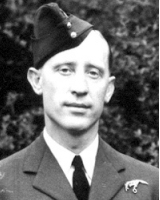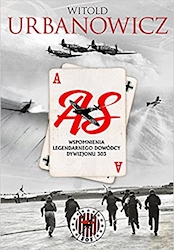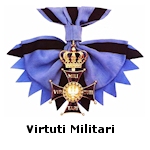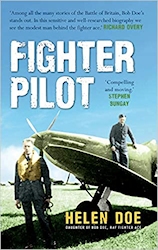
Witold Urbanowicz
(1908 - 1996)
Date of Birth: 30/03/1908
Nationality: Polish
Nickname: 'Cobra'
Career Rank: Squadron Leader
BoB Kills: 15
Total Kills: 28
Witold Urbanowicz was born in Olszanka, Poland on the 30th March 1908. In 1930 he learnt to fly at the Szkola Podchorazych Lotnictwa flying school. He was then posted to the 1st Air Regiment night bomber squadron as a 2nd Lieutenant Observer.
Witold completed an advanced pilot course to become a fighter pilot and when the training was completed he was then posted to the 113th and 111th "Kosciuszko" Squadron.
During August 1936 a Soviet reconnaissance aircraft strayed into Polish airspace and Urbanowicz, flying a PZL P.11a fughter, shot it down. Urbanowicz was reprimanded for this act for political reasons but secretly congratulated and transferred to a training school in October 1936.
In 1939, during the invasion of Poland, Urbanowicz was a member of a Ulez Group flying old PZL P.7a fighters attempting to defend Deblin and Ulez airfields from enemy aircraft. Due to the antiquated aircraft they were not able to shoot down any enemy bombers and they were evacuated on the 8th September 1939.
Urbanowicz along with cadets were sent to Romania to await for replacement aircraft but none arrived so he returned to Poland to carry on fighting. He was captured by a Soviet unit but managed to escape across the Romanian border and on to France where a Polish army was forming.
Whilst in France, Urbanowicz and other Polish pilots were invited to travel to England and join the Royal Air Force and after initial training he was posted to 6 Operational Training Unit in July 1940 for further training on fighters. He was then posted to 145 Squadron becoming operational 4th August 1940.
Whilst unofficially flying with 601 Squadron, Urbanowicz shot down a Messerschmitt Bf 110 on the 8th of August and on the 12th August 1940 he shot down a Junkers Ju 88.
He was transferred to 303 Squadron as 'A' flight commander on the 21st of August, which was manned by Polish pilots flying Hawker Hurricanes. He shot down a Messerschmitt Bf 109 on the 6th of September and became Squadron Leader on the following day. Urbanowicz also shot down 2 Dornier Do 17's on the 15th of September 1940.
Urbanowicz was awarded the Silver Cross of the Virtuti Militari and the Distinguished Flying Cross (DFC) on the 24th October 1940. On the 27th of September he shot down 2 Junkers Ju 88's, a Messerschmitt Bf 109 and a Messerschmitt Bf 110 and on the 30th of September he shot down 3 Messerschmitt Bf 109's and a Dornier Do 17. Despite his success Urbanowicz was not popular with the other Polish Pilots and he was replaced as Commanding Officer. During the Battle of Britain he had shot down 15 confirmed kills.
Urbanowicz commanded the 1st Polish Fighter Wing at RAF Northolt between 15th April and the 1st June 1941 and was then posted to the 2nd Air Attaché of the Polish Embassy in the U.S.
September 1943, Urbanowicz joined the USAAF and on 23rd October he was posted to 75th Fighter Squadron in China flying a P-40 Warhawk. On the 11th December he shot down 2 Mitsubishi Zeros. He was awarded the US Air Medal and Chinese Flying Cross. In December 1943 he returned to England.
In 1946 Urbanowicz returned to Poland but despite all his heroics he was arrested on trumped up charges of being a spy due to the fact that he had been in Great Britain and the United States for five years. He was imprisoned and then released prompting him to leave Poland and live in America where he worked at various airlines.
Upon the fall of communism in Poland, Urbanowicz visited his homeland and was given the honorary rank of General to recognise his achievements during the Battle of Britain. Witold Urbanowicz died on August 1996 at the Veterans Administration Hospital in Manhattan, New York, at the age of 88 years.

 "Lest we forget"
"Lest we forget"














